Trips
Tuesday - 9/1 – Uchisar to Kusluca, a fishing village for our home stay
The view from the verandah this morning was filled with ballooons. This is a very popular tourist attraction - riding in a balloon over the pointed fairy chimneys.
|
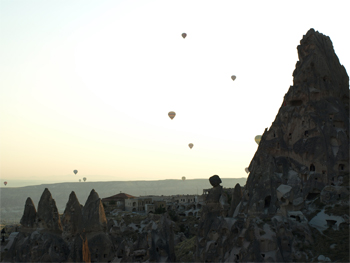
At least 50 balloons were up
|
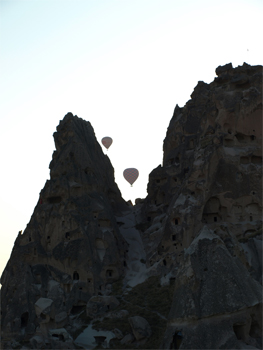
At the fortress
|
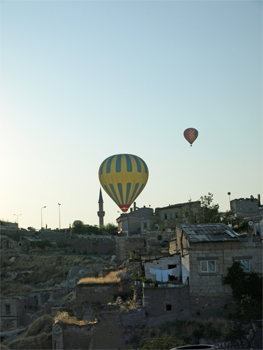
Over town and the pointed minarete |
After breakfast we headed back to Avanos and stopped at Chez Galip, a pottery factory – run by master potter Galip Korukcu. His shop and studio are built into a huge cave.
Mr. Korukcu sat at a kickwheel and in five minutes created a neat teapot. First he made the lid, then the pot (with three holes instead of one to pour through so the loose tea leaves would be strained out), then the spout and last the handle. He used no measuring device but the lid fit perfectly.
|
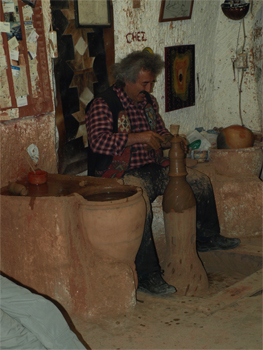
Einstein of the pottery wheel!
|
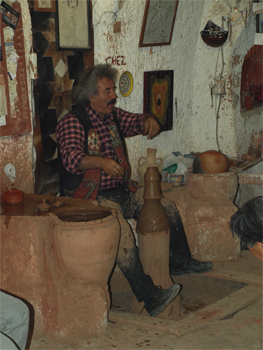
|

|
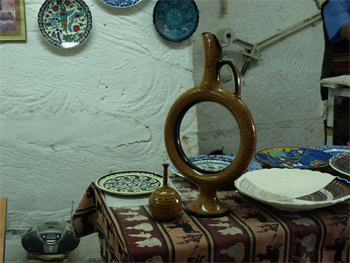
Wine decanter |
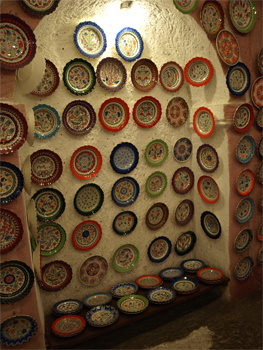
The displays in the showroom of various plates, tiles, pots, cups, ornaments, etc. were like something from a museum.
|

Beautiful plates |
We next headed south on the famous Silk Road and soon left Kapadokya and the volcanic fairy chimney region and entered the plains of Anatolya. The land is flat and good for farming.
The bus stopped for “petrol” at a Shell station that was voted to have the nicest WC in Turkey. For .5TL (35 cents) it was like an American rest room, but still had some squat toilet stalls. |
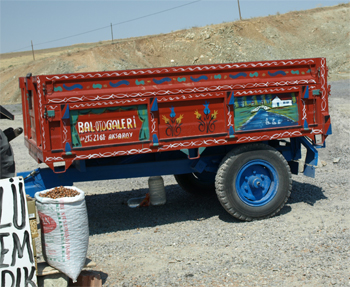
Another nicely painted cart
|
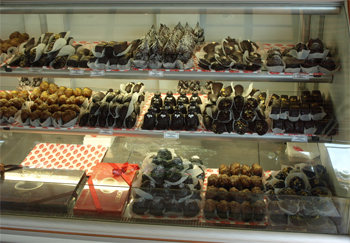
Temptation at the petrol stop |

Lunch across from the large 13th century Sultanhani Caravanserai |
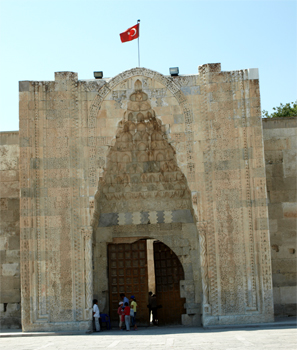
|
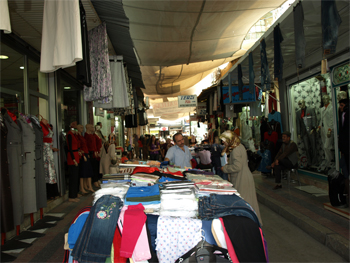
Shopping in Konya
|
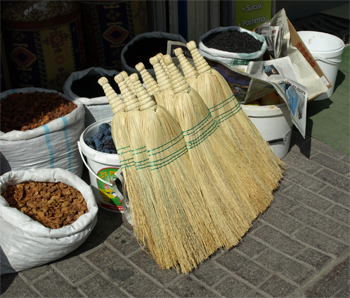
|

Turkish pizza - a Ramadan special (meat sauce on a cracker thin crust)
|
We arrived at and toured the Mevlana Museum (or the Whirling Dervish Museum). The elaborate domed building looked like a mosque but was the training center for whirling dervishes and now contains the crypts of Rumi (name means "the Roman" – he was a 13th-century Persian poet, jurist, theologian, and sufi mystic – the practice of the whirling dervishes resulted from his ideas - and other head dervishes. There were cases of old Korans, prayer rugs, beads, instruments used in the whirling service, etc. The kitchen was the training area for the cult activities and is now an exhibit with mannequins depicting the 13th century activities. We had to don booties to enter and walk on the marble floors.
|
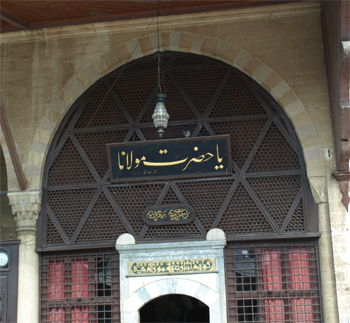
Whirling dervish museum |

Whirling dervish cemetary
|
South of Konya we left the farming plains and entered an area of rolling hills and reforestation. We stopped to enter a “forest mosque” in Beysahir. It was built in the 13th century before domes were the favored pattern. This mosque has many cedar pillars supporting a flat roof with a brick minaret. |
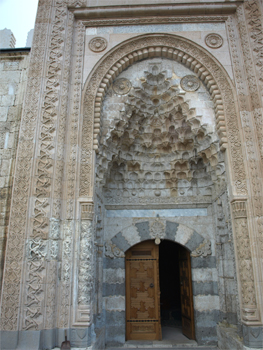
Front door
|
We met the Imam who is a civil servant, is paid a government salary, and has four years of university training in theology. He is married and has two daughters.
He has such a wonderful voice (he sang a Muslim song for us) his call to prayer is piped to about 700 mosques.
|
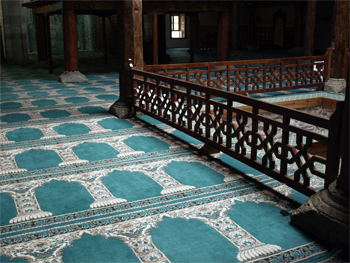
Interior |
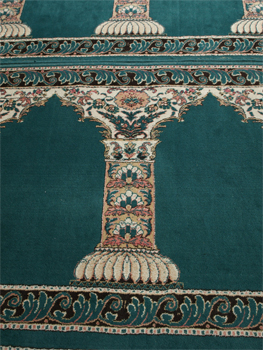
Carpet detail
|

Interior
|
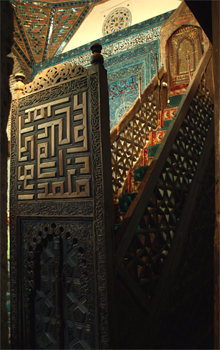
Interior |
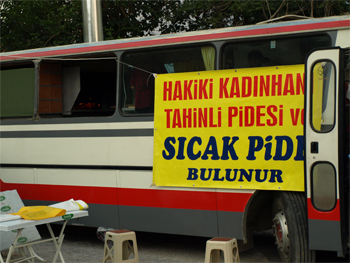
We were fascinated by the food truck outside with a real wood burning oven inside the truck.
|
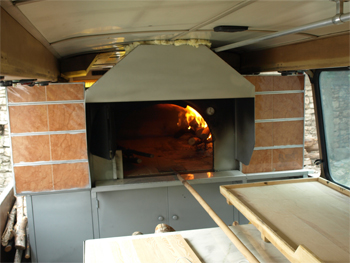
|
After a couple of wrong turns (the road signs were down) we finally arrived at Kusluca (the place with the birds) for dinner, sleeping, and breakfast. This was our OAT “home stay.” The village is a small fishing village on the shores of Lake Beysehir.
The house we all stayed in was three stories high with enough bedrooms for all of us to have our own room for two. We slept on futons on the floor on a beautiful Turkish rug and were very comfortable.
Dinner consisted of numerous courses. The stuffed peppers were very good as was everything else. Our lentil soup also had potato, onion, beans, and chickpeas. After dinner we gave our hosts the little mementos we brought from the US. Marge had made a 20 picture photo album of where we live and the animals that live here too. It was a big hit. Breakfast included Turkish “eggy bread” - like deep fried French toast. It was delicious, especially with the apricot syrup.
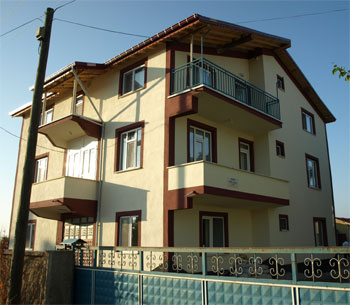
|
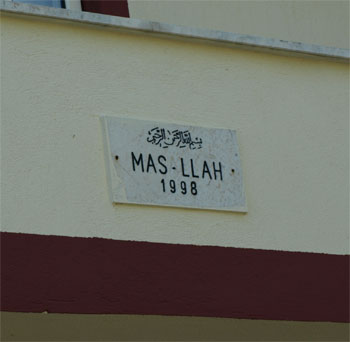
|

|
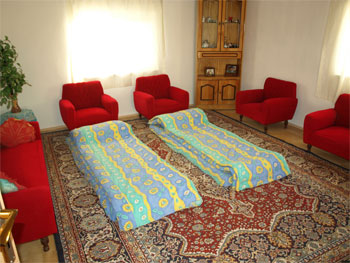
Futons on Turkish carpets
|
Wednesday - 9/2 - Kusluca to Antalya
We got up and walked through the little village of Kusluca. There are some new houses under construction right next to a traditional mud brick house with poplar tree poles and thatch and a clay roof. This construction is thousands of years old. |
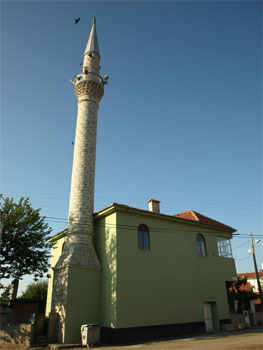
Local mosque
|
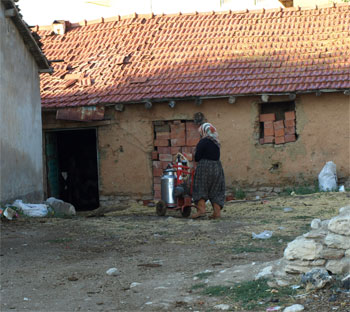
Milking time |
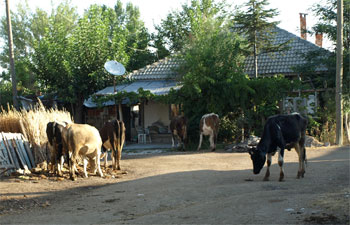
Home on the range
|
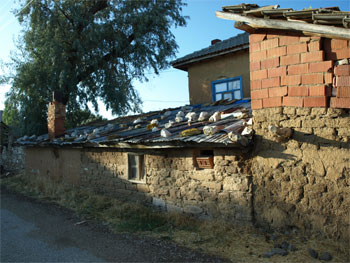
Traditional mud brick construction
|
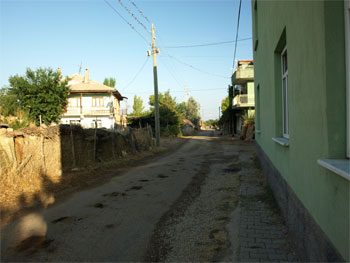
Village street
|
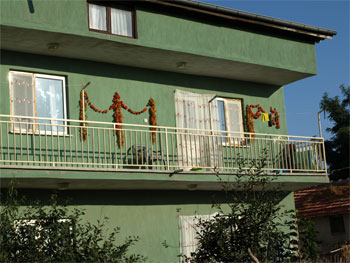
Modern construction |
The bus drove us down to the fishing boat launch area on the lake. They fish with three-mile long nets. They motor out, drop the nets, one rows while the other pulls the net in by hand. This area used to pull in five tons of fish a day, now only 500 pounds. |
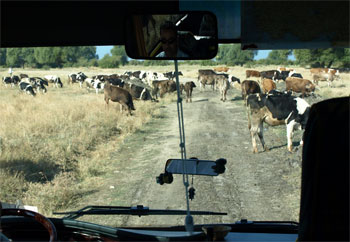
Road congestion
|
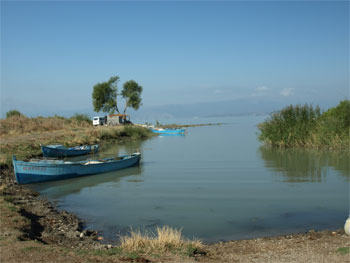
Inlet on Lake Beysehir |
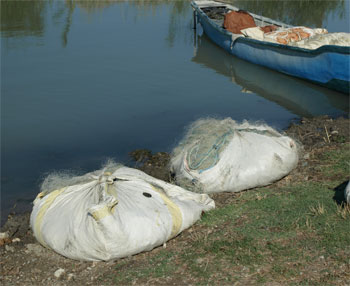
Fishing nets
|
We drove on south through the lake region. Mountains, farmland and orchards (this is the apple capital of Turkey), and small villages. Adnan stopped at a road-side well and showed us how water is brought up from the aquifer to water livestock. It was a pole on a pivot with a chain and a bucket on one end. The bucket is lowered down a shaft, drawn up, and dumped into a trough.
|
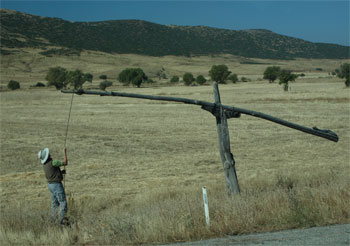 |
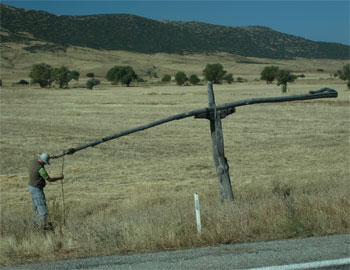
|
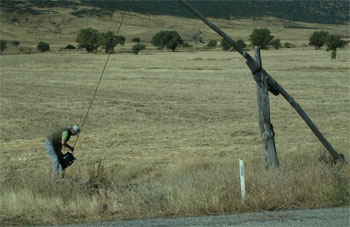
|
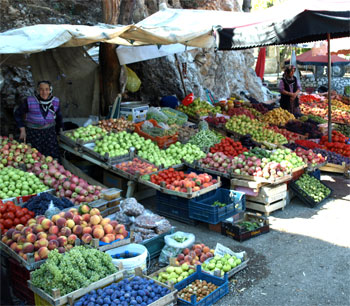
Roadside fruit and vegetable stands
|

We bought a peach (very juicy and sweet) and an apple to eat later. |
We ate lunch at a town, Egirdir, on the Lake Egirdir.
While waiting for our lunch to be prepared (the restaurant was closed because no one eats lunch during Ramadan but they fixed lunch for us) we took a short walk around the immediate area. |

We passed a cemetery with grave stones showing dates such as born in 1330 and died in 1985! These result because Ataturk changed the country from the Arabic to the Gregorian calendar in the 1920s. |

|
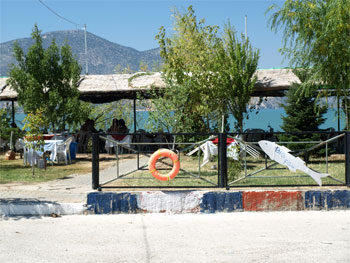
Lunch at the Big Fish
|
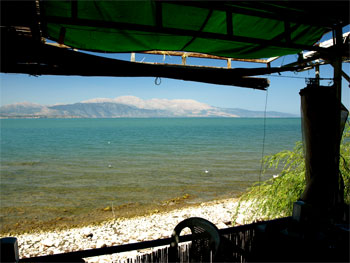
Lake Egirdir |
This is a solar powered hot water heater. Most homes that we saw have these and in the cities where there are large apartment buildings, etc. they look like a forest of cylinders on the roof.
|
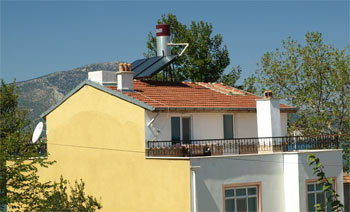
|
We drove through the Taurus Mountains that are part of the Alps and continue east to the Himalayas. They are limestone and covered with oak and pine. On the south side, red pine and oleander grow. Closer to the Mediterranean we began to see myrtle, olive, and fig trees. Anatolya is the “land of greenhouses” and grows summer veggies in them in the winter so there are fresh tomatoes, eggplant, cucumbers and flowers all year round.
We arrived in the town of Antalya and had to leave our bus in a depot and walk into the old town to our hotel. The hotel is a remodeled series of houses.
|
We are on the third floor in the smallest room I have ever stayed in. The two twin beds abut each other with enough room to open the hall door and get out of the other side of the far bed. There is one chair, a cabinet with a safe and a ‘fridge that does not work and no space left to put anything like the two suitcases! The bathroom shower stall is 27 inches square but at least it works fine. We are not pleased with our room assignment. I had to put my medicine in someone else’s room whose ‘fridge works.
|

Our band box room
|
Dinner tonight was here at the hotel. The main course was a chicken and potato stew roasted in parchment paper. It was good and so was the lentil soup (different yet again) and the leek and carrot in olive oil starter.
After dinner we took a short stroll down to the harbor. It felt good to walk and we will do more touring tomorrow.
Continue on next page
















































